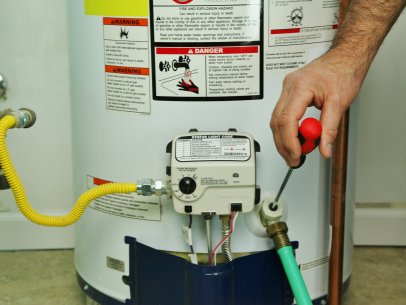Just about every person may have their private thinking on the subject of What Kind of Maintenance Do Water Heaters Need?.

Warm water is essential for daily comfort, whether it's for a revitalizing shower or washing recipes. To guarantee your warm water system runs efficiently and lasts much longer, regular upkeep is crucial. This article supplies useful suggestions and understandings on just how to maintain your home's warm water system to prevent disturbances and pricey fixings.
Intro
Maintaining your home's warm water system may appear challenging, however with a couple of straightforward steps, you can ensure it runs smoothly for several years to find. This guide covers everything from recognizing your warm water system to do it yourself upkeep suggestions and recognizing when to hire professional help.
Relevance of Keeping Your Warm Water System
Normal maintenance not only expands the lifespan of your warm water system yet also ensures it operates effectively. Ignoring maintenance can lead to lowered efficiency, higher energy costs, and also premature failure of the system.
Signs Your Warm Water System Requirements Upkeep
Understanding when your hot water system requires attention can prevent major issues. Watch out for indications such as inconsistent water temperature, strange sounds from the heating unit, or rusty water.
Comprehending Your Warm Water System
Before diving into upkeep tasks, it's valuable to recognize the standard components of your hot water system. Normally, this includes the water heater itself, pipes, anode poles, and temperature level controls.
Month-to-month Upkeep Tasks
Regular monthly checks can help capture minor concerns before they rise.
Flushing the Hot Water Heater
Flushing your water heater gets rid of sediment accumulation, enhancing performance and prolonging its life.
Monitoring and Replacing Anode Rods
Anode rods prevent deterioration inside the storage tank. Inspecting and changing them when worn is important.
Evaluating and Readjusting Temperature Level Setups
Readjusting the temperature setups guarantees optimum performance and safety and security.
DIY Tips for Upkeep
You can do a number of upkeep tasks yourself to keep your hot water system in top condition.
Looking for Leakages
Regularly inspect pipes and connections for leaks, as these can bring about water damage and higher bills.
Evaluating Pressure Relief Valves
Testing the stress safety valve ensures it operates properly and stops excessive pressure buildup.
Protecting Pipes
Protecting hot water pipes lowers heat loss and can conserve energy.
When to Call an Expert
While do it yourself upkeep is helpful, some concerns require expert know-how.
Complicated Problems Requiring Specialist Help
Instances include significant leaks, electrical problems, or if your water heater is continually underperforming.
Routine Professional Maintenance Conveniences
Professional upkeep can consist of extensive inspections, tune-ups, and guaranteeing compliance with security standards.
Final thought
Normal maintenance of your home's hot water system is crucial for effectiveness, long life, and cost financial savings. By complying with these tips and understanding when to seek specialist assistance, you can make certain a dependable supply of hot water without unexpected disturbances.
How to Maintain an Instant Hot Water Heater
Before tinkering with your hot water heater, make sure that it’s not powered on. You also have to turn off the main circuit breaker and shut off the main gas line to prevent accidents. Also turn off the water valves connected to your unit to prevent water from flowing into and out of the appliance. 2. When you’re done, you have to detach the purge valves’ caps. These look like the letter “T” and are situated on either side of the water valves. Doing so will release any pressure that has accumulated inside the valves while at the same time avoid hot water from shooting out and burning your skin. 3. When the purge valves’ caps are removed, you have to connect your hosing lines to the valves. Your unit should have come with three hoses but if it didn’t, you can purchase these things from any hardware or home repair shops. You can also get them from retail stores that sell water heating systems. Read the user’s manual and follow it to complete this task properly. When the hosing lines are connected, open the purge port’s valves. 4. You should never use harsh chemical cleaners or solutions when cleaning your unit. Make use of white vinegar instead. It should be undiluted and you’ll probably use about 2 gallons. 5. Now flush your water heater. This task should probably take about 40 minutes. We can’t give you specific directions for this because the procedure is carried out depending on the type, model and brand of your heater. With that being said, refer to the user’s manual. 6. When you’re done draining the unit, you have to turn off the purge port valves again. Remove the hosing lines that you earlier installed on each of the water valves. Put the valve caps (purge port) back in their respective places and be very careful so as not to damage the rubber discs that are found inside these caps. 7. Now that everything’s back in place, check your user’s manual again to find out how to reactivate your water heating system. 8. Once it is working, turn one of your hot water faucets on just to let air pass through the heater’s water supply pipes. Leave the tap on until water flows smoothly out of it. https://www.orrplumbing.com/blog/2014/september/how-to-maintain-an-instant-hot-water-heater/

I was introduced to that report on Tips For Maintaining Your Hot Water Heater from a pal on another web page. Be sure to set aside a second to promote this blog post if you enjoyed reading it. Thanks so much for your time invested reading it.
View